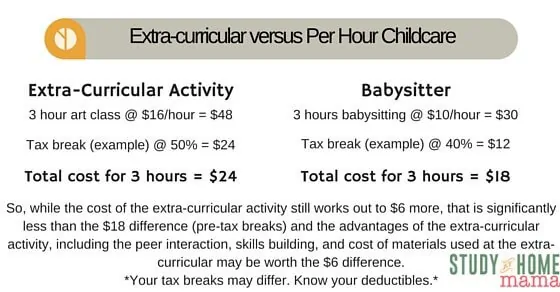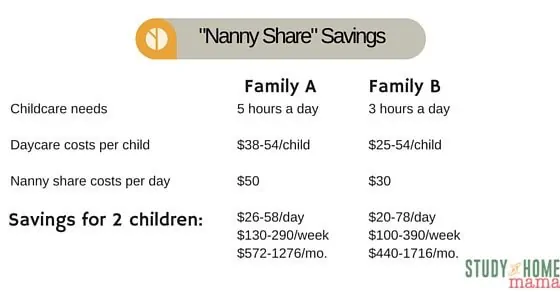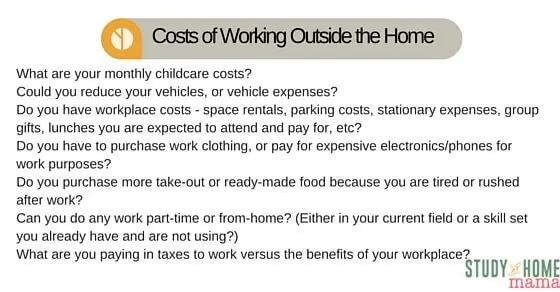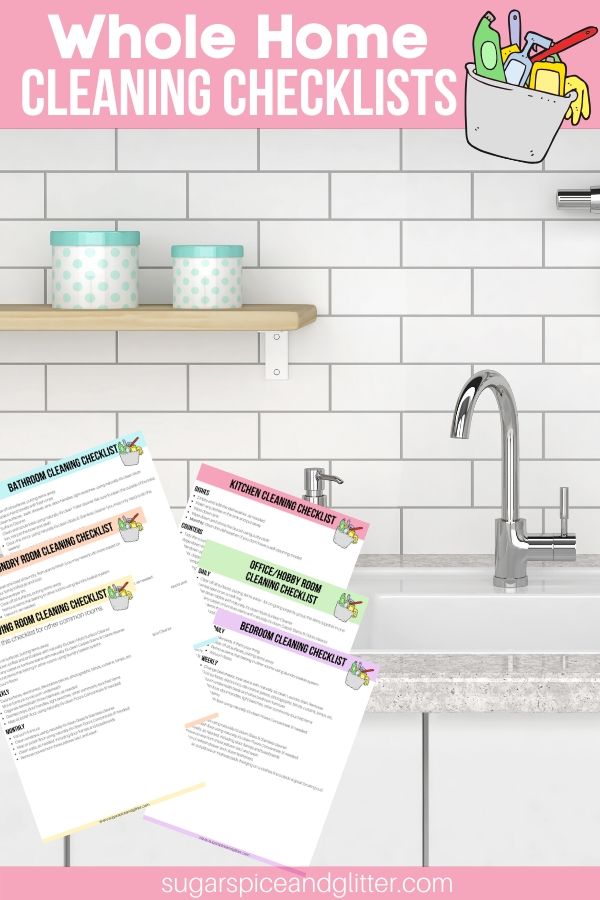6 Ways to Save on Childcare
This month, each of the Financially Savvy bloggers will be sharing creative ways to save on different lines of your budget.
Being a childcare provider, I decided to tackle 6 ways to save on childcare!
Childcare can be a huge expense – but really, I believe this is a budget line that should reflect your values – consider what needs to be covered in that expense: healthy meals and snacks, a fair wage to a quality childcare provider, good quality materials for learning, sensory play, and crafts, etc, and a safe outdoor play environment.
However, not all of us need the typical daycare arrangement.
Unless you live in a province or state that has strict rules on childcare, you’ll be surprised at how a bit of creativity can stretch your budget in this area. While I write this post to encourage you to look at different options, I also want to emphasize the importance of investing in good childcare. Treat your childcare provider with the respect that your child’s secondary caregiver deserves – these are foundational years in your child’s life and you want them to be full of safe and wonderful memories and experiences.
How to Save On Childcare
In-Home Nanny
In my area, $12 is the current minimum wage, but if you are providing room and board to a live-in nanny, you can deduct a percentage of those costs from their wage. So, if you need 40 hours a week of childcare, a babysitter or out-of-home nanny could cost $480/week or more. If you have an extra room (or can move the kids in together to make an extra room), providing room and board to a nanny could bring the cost down dramatically – half or even less!
If you have more than one child, a nanny may actually cost less than daycare.
Look at the cost of rooms or one-bedroom apartments in your area for a comparative measurement of what’s fair to deduct, and ensure that you know the laws regarding employment (as your nanny will be an employee). The norm is to deduct about half the rate of the realistic rental rate for the room from your nanny’s wages.
Childcare Swap
Perhaps you don’t have a need for full-time childcare, maybe a few hours a week? Swapping with a friend is a great option – your kids get a built-in play date and there’s no cost to either of you.
Be sure to swap with a friend who is reliable and whose kids you can handle. Work out agreements for cost of outings or what happens if a child breaks something.
You can even trade with a friend who doesn’t need childcare in return, but could use a different skill or service you can provide. For example, maybe you’re a great cook and your friend could use a few homemade meals in exchange for a few hours of childcare, or maybe you can save your friend the $15 hemming cost at the local seamstress and hem some pants!
Take Advantage of Tax Breaks
Do you know how much of a tax break you get for childcare? Or extra-curricular activities?
In my area, not only do all parents receive a set amount of government grant money every month to go towards the cost of childcare, we also get tax breaks for the cost of childcare and certain extra-curricular activities. Some cities have allocated funds for childcare subsidies.
Know what these breaks and grants are (you may need to apply for them in your area) and figure out how they can work for you. For example, it might work better to enroll your child in a day camp if you need only a few days of care, versus hiring a babysitter for those days.
For me, enrolling my daughter in a 3 hour art class makes more sense with the tax-breaks than hiring a babysitter for three hours, even though the art class is more expensive. Here’s the breakdown:
Home Daycare versus Center Care
While home daycare is often cheaper, cost should not be the first factor in any childcare decision. Quality care, caring individuals, healthy food, and meaningful experiences should come above that. I’ve seen both great and poor examples in either model, I think that quality care can be found in either environment, with the right providers and the right circumstances. There are benefits and drawbacks for both models, and one is not safer than the other.
With either model, government subsidies may be available if you cannot cover the costs completely. It may also be worth exploring if part-time or full-time works out better, and what the hours are. For example, if your workplace has the option to work 4-10 hour days and take a 3-day weekend, you may be better off finding a daycare that accommodates those long hours and allows you to take off that fifth day at no charge. (However, some daycares charge more for part-time children or charge for the spot, regardless of how many days are used.)
Often paying a childcare provider directly rather than going through an agency can be more affordable – just ensure you are still receiving receipts and the provider is following the laws for childcare in your area. In my city, agencies often add an extra $10/day onto the cost of childcare just for the initial point of contact and brief monthly or quarterly inspections (which you could arrange to informally conduct with your childcare provider yourself and feel more confident in the results).
Also – as an individual provider, I’ve worked out trades with families who can use the budget savings and can offer me savings in other ways. For example, one family often travels to a store outside of the city that offers amazing grocery savings. A few times, I’ve given them a bit of a discount in exchange for grabbing me a few bags worth of groceries – saving me the time and expense of travelling to the store myself.
Nanny Share
This is something that I did for a group of families while I was in school. What you do is find other families with complimentary childcare needs – maybe you need a few hours in the mornings, and a friend needs afternoon care. Or, you need set days and your friend is more flexible and can arrange her work or errands around your schedule.
Place an advertisement at the local university, college, or other quality classifieds in your area, looking for a “nanny.” By offering a guaranteed number of hours, you can find someone more reliable than an occasional babysitter, and perhaps more affordable than a babysitter or childcare center. Personally, I was guaranteed 30 hours a week at $10/hour – a little less than minimum wage at the time, but the guaranteed hours made it worth it for me; and for the families, they each had two or three children and paid less per day than the cost of putting one child in daycare.
With hiring a nanny or babysitter, make sure to ask for references and call those references!
Consider Leaving Work
This may not be feasible for you, but one of the first things to consider is, “does it make sense for me to work?”
If you love your job and can not imagine life without it, this may not be the option for you, but if the cost of working ends up negating the wages you or your spouse is earning, it may be worth considering having one of you leave the work force, at least temporarily, or considering a part-time or work-from-home arrangement (which will likely still have it’s own set of childcare needs).
Consider the following questions:
Now, some of these costs can be reduced or alleviated without leaving work – for example, car pooling may reduce the car expenses, allow you to reduce your family’s vehicles, give up that monthly parking spot, and so on, without quitting or taking leave. Maybe looking into freezer or batch cooking can help with the take-out expenses.
Whatever you choose needs to make sense for your family and long-term goals. Could you re-enter the work force after your children started full-time school? Would you want to? Do certain benefits (i.e., medical or dental benefits) outweigh the “savings” of staying home?
Be sure to also consider what budget you will put towards entertainment or activities for the kids while you are home. While crafts and kids activities can be done on a budget, you still want to factor that $20-100/month into your budget – are you going to want to get out of the house? What free activities (library, park) are close by? Is a membership at a local recreation center or children’s museum worth budgeting for? Do you anticipate your normal heating and water costs increasing now that you’ll be home during peak hours?
Personally, as a single parent, working from home made more sense for me and I feel incredibly lucky that I basically lived the “stay at home mom” lifestyle as a single parent while still providing for my family. I truly believe anything can work if you are determined and creative in your approach.
Childcare costs can seem non-negotiable, but hopefully this post has shed some light on your options. Even if your day-to-day childcare costs are a little less flexible, maybe you’ll be a bit more creative with arranging childcare swaps for date nights or running child-free errands!
I’d love to hear from you! What ideas do you have for saving on childcare costs?
Check out the other financially savvy posts in our series here.








Some of these expenses can be lessened or eliminated without taking time off from work.
Absolutely agree!